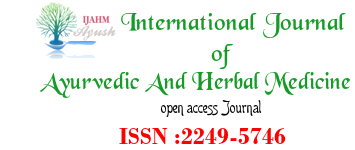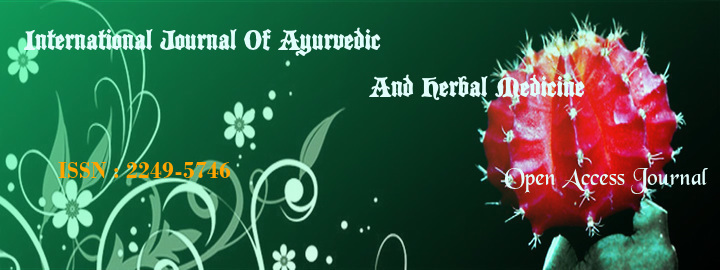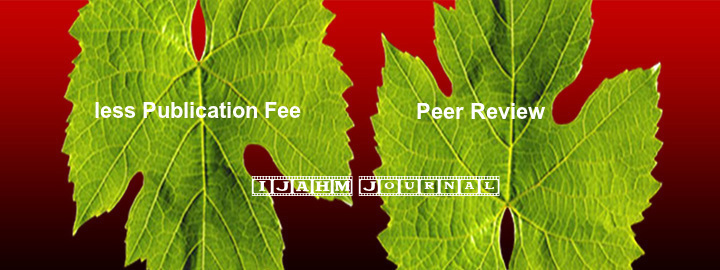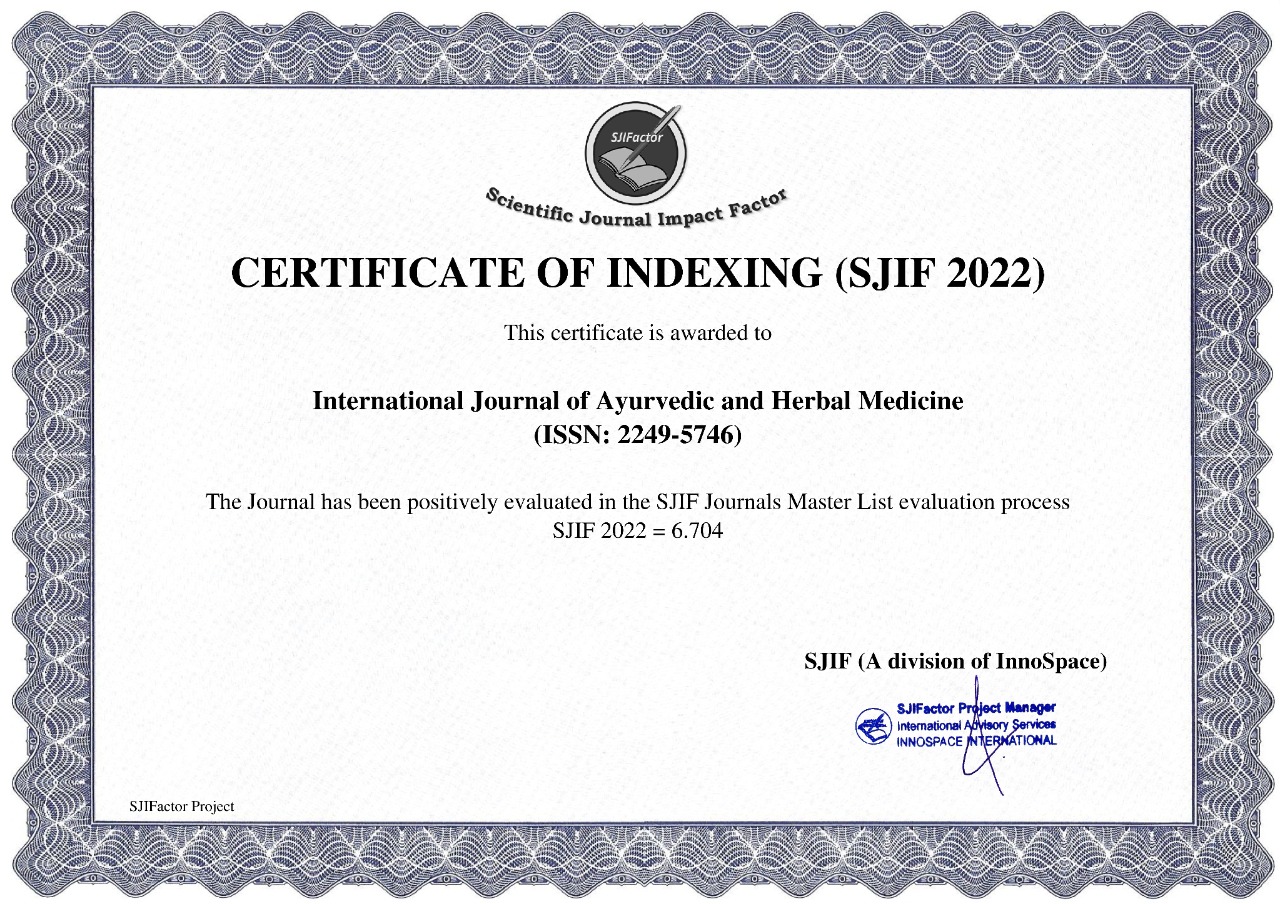


1Puspa Devi Bhattarai , 2Hari Prasad Aryal.
DOI : http://dx.doi.org/10.31142/ijahm/v9i2.04
Central Department of Botany, Tribhuvan University, Kirtipur, Kathmandu, Nepal
Abstract:-
Diseases of plants are a major problem for agricultural Worldwide. Fungal diseases have been one of the principal causes of crop loss. Seed-borne diseases are of two types, Internal and external seed-borne pathogens. Seed-borne pathogens results in seed rot, seedlings decay etc. Conditions for treatment of fungus were done in two major ways that is In-vivo and In-vitro way. Field treatment is known as In-vivo treatment. Prevention for the spread of disease is controlled by various techniques, among them Blotter technique was used for the experiment. The objective of the work is to determine the wilting of seedlings then after to compare, its efficacy of seed-borne pathogen of maize. The effects of major seed- borne fungus pathogens against maize seedlings were studied. Experiments were conducted to determine the optimal level of wilting of seedlings separately. The effects of different pathogens were observed on the seedling. Seven days of treatment cause wilting occurs. Major three fungus pathogens (Aspergillus flavus, Aspergillus niger & Fusarium oxysporum) were sprayed for those experiment separately in separate pots simultaneously. Tested fungus pathogen Aspergillus flavus shows fast witting of seedlings among other two by A. niger and F. oxysporum possesses wilting properties respectively. Seed-borne pathogen may be different types of bacteria and can be studied on applying that bacteria in different other plant seedlings rather than maize seedlings.
Key-words: Antimicrobial properties, Blotter technique, Nutritive media.
References:-
1. Cardoza, Y. J. Alborn, H.T. & Tumlinson, J. H. 2002. In-vivo volatile emission from peanut plants induced by simultaneous fungal infection and insect damage. Journal of Chemical Ecology. 28: 161-174.
2. CBS 2011, Population Census 2001, National Report. Central Bureau of Statistics HMG/N Kathmandu.
3. Cornelissen, B.J.C. & Melchers, L.S. 1993. Strategies for control of fungal diseases with transgenic plants. Journal of Plant Physion. 101: 709-712.
4. Dalvi, R.R. and Whittiker, M.B. 1995.Taxicological implications of the metabolism of benomyl in animals. Journal of Environmental Biology.16: 333-338.
5. Galvano, F. Piva, A. Ritieni, A. & Galvano, G. 2001.Dietary strategies to counteract the effect of mycotoxins: a review. Journal of Food Protection. 64: 120-131.
6. Gatto, M.A. Ippolito, A. Linsalta, V. Cascarano, N.A. Nigro, F. Vanadia, S. and Di Venere, D. 2011. Activity of extracts from wild edible herbs against post-harvest fungal diseases of fruit and vegetables. Post-harvest Biology and Technology. 61: 72-82.
7. Hussain,H.Badawy,A.Elshazly,A.Elsayed, A. Krohn,K. Riaz,M. and Schulz,B.2011. Chemical constitutes and antimicrobial activity of Salix subserrata. Records of Natural Products. 5: 133.
8. Kharde,M. N.Wabale, A. S. Adhav, R.M.Jadhav, B. D. Wabale, A. M. and Pandey, M. 2010. Effect of plant extracts on fungal pathogens causing leaf blight of tomato in vitro.Asian J. of Exp. Biol. Sci.Spl. 3: 121-123.
9. Manandhar, K.L.1983. Investigation of maize diseases in Nepal-I: Identification and prevalence. Journal of Institute of Agriculture and Animal Science. 4: 45-56.
10. Mishra, M. and Tiwari, S. N. 1990. Ethanolic extract toxicity of three botanicals against five fungal pathogens of rice. National Academy of Science Letters. 13: 409-412.
11. MoAD, 2014, statistical information on Nepalese agriculture 2070/71. Agri-business promotion and statistics division. Ministry of Agriculture Devlopment, Kathmandu, Nepal.
12. Montes-Belmont, R. & Carvajal, M. 1998. Control of Aspergillus flavus in maize with plant essential oils and their components. Journal of Food Protection. 61: 616-619.
13. Philips, D.J. 1984. Mycotoxins as a post-harvest problem .In: Moline, H.E.(Ed.),Post-harvest Pathology of Fruits and Vegetables. Post-harvest Losses in Peridhable Crops. Agricultural Experimental Stations, University of California. Berkeley Publications. 3: 50-54.
14. Pozo, M.J. & Aguilar, C. A. 2005. Unraveling micorrhiza induced resistant. Current Opionion in Plant Biology. 10: 393-398.
15. Samia, M. EI-Khallal. 2007. Australian Journal of Basic Applied Science. 1: 691-705.
16. Stinson, E.E.Osman,S.F.Heisler,E.G.Siciliano, J. and Bills,D.D. 1981.Mycotoxin production in whole tomatoes , apples,oranges, and lemons. Journal of Agricultural and Food Chemistry. 29: 790-792.
17. Yu,T. & Zheng, X.2006. Salicylic acid enhances by control efficacy of the antagonistic Cryptococcus laurentii in apple fruits. Journal of plant growth regulation. 25: 166-174.
index






















